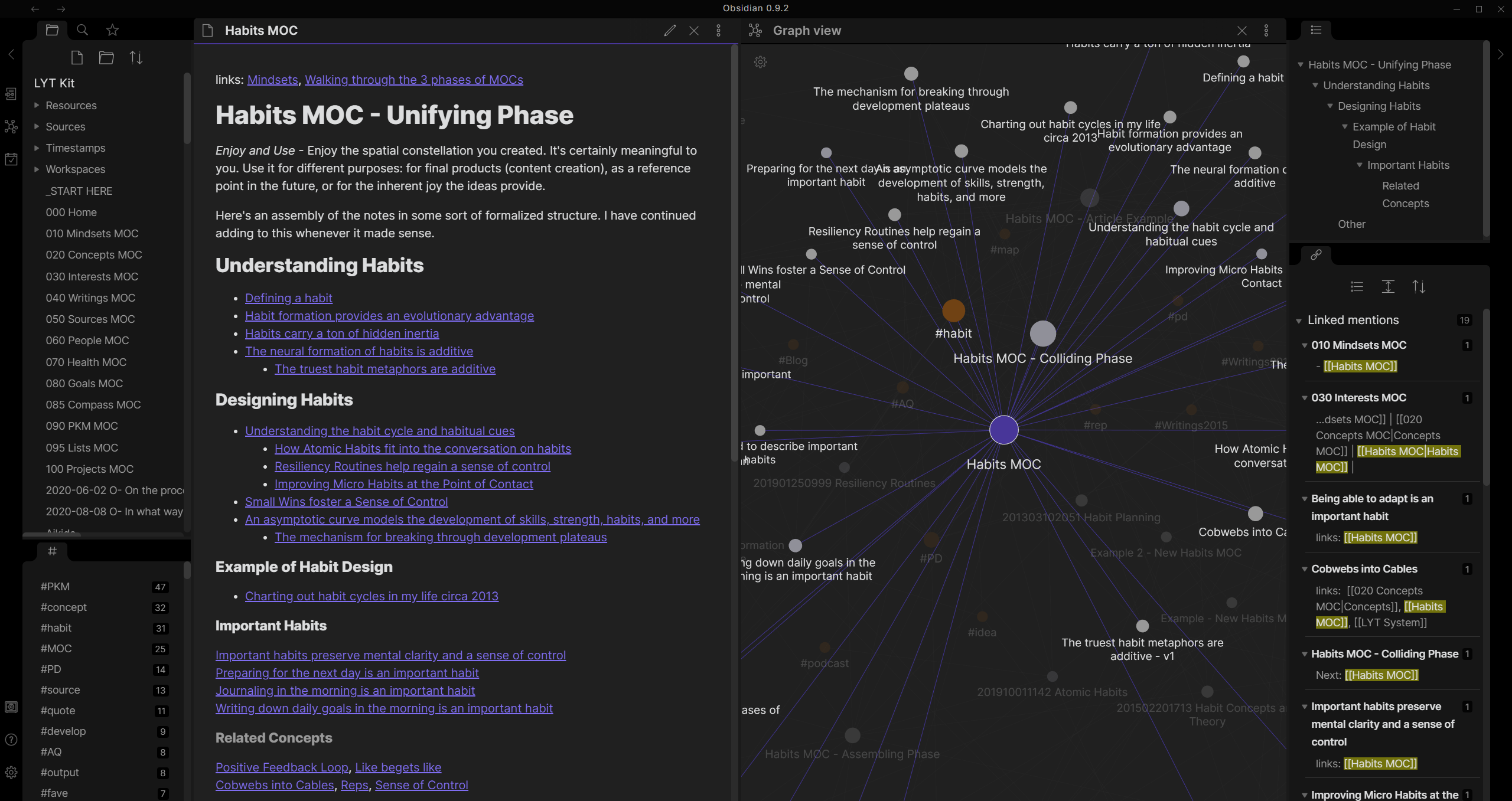Obsidian and second brains
Taking notes of everything, but quickly

I have stopped reviewing tools as part of my blog for a long time, but I did want to point out the benefits of the second-brain approach of some applications. I have personally found my sweet spot with Obsidian, so I’d like to talk about that.
What’s a second brain?
Imagine if you could easily store everything you learned, or everything you need to remember. Everything from how to solve a particular problem, to maybe a journal entry, or maybe a phone number or email address you need to keep in mind, at some point.
Such a structure would only need you to record this information in a simple manner, and then just allow you to search it effciently. Say, “oh, I had that doctor’s phone number somehwere”, and by typing “doctor phone” in some search, you’d be able to find it.
Also, something that makes it easier and that you can always carry with you. It needs to be an extension of your own mind. Hence, the second brain name.
Papers as second brain
Most of us, the ones that have learned and studied when computers where not ubiquitious, learned to acquire knowledge by writing it down, copying, summarizing and storing it.
Then, if you had forgotten something, at least you had a tidy place where you could look it up without having to restort to the sources.
But the problem with paper is that it’s very difficult to search. My experiences with bullet journaling helped with that for a bit, but it still required a lot of maintenance effort, and it wasn’t very accessible unless I had my notebook right with me.
Software as second brains
For a while I’ve been experimenting using note taking in software as second brains, but no real structure to it. I’ve been using EverNote for a while, and I liked that it didn’t force any particular structure on me.
Because it had a powerful search engine, it meant I could just write down stuff whenever I wanted, include multimedia, links, and just search it later on.
For things that I wanted to keep absolutely separate (like work and personal notes) I could always create separate notebooks.
And for having stuff available, I would always have a search in my phone, tablet, or computer. Unfortunately, to use more than a single device and have the notes synced, you need to upgrade to one of the paid plans.
Obsidian

And eventually I found Obsidian, a very similar offering but aside from being completely free. The underlying content is stored in plain markdown files that are easy to update through any text editor. The search works by full text search, and its usage is also very structure-less, but it is focused on interlinking the different notes that you take, creating a graph of knowledge.
Of course, you don’t have to, but when you do, it is still easy to find everything. The interlinking allows you to connect notes together, which helps coming up with ideas that you haven’t had before.
Finally, it’s a great place to keep notes and come back to them for things that you need.
GitHub + Quartz
Obsidian offers Obsidian Publish for a price, and Obsidian Sync for a price too. However, I wanted to stay with the free offerings so I instead opted to sync using a GitHub repository, and publish using Quartz in GitHub pages.
My tech garden
Do you want to see what it looks like? I’ve been taking notes on whatever new thing I learn and want to keep track of. I’m calling it my Tech Garden and I’m publishing it on Tech Garden @ Alpha’s Manifesto. Mind you, it’s just a bunch of notes meant for my consumption. It’s not meant to be a useful reference, but rather an inspiration to do something similar of your own.
